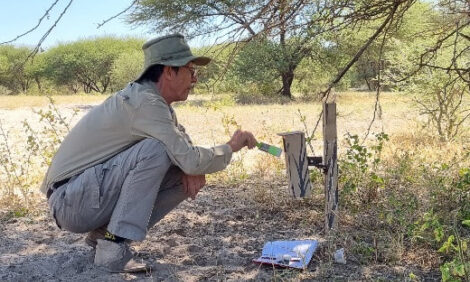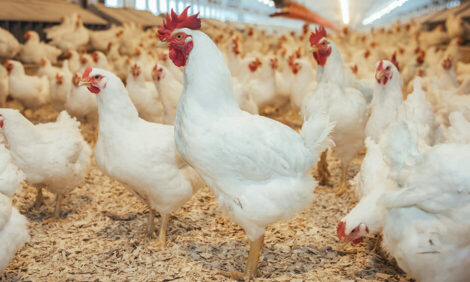



Low-Input Birds Meet Needs of Developing Countries
Indbro Research & Breeding Farms Pvt. Ltd has developed a low-input broiler strain which, the company says, thrives in the growing conditions in India and meets the demands of the local market.Providing nutritious food to everybody is the priority of any government in any country. When the purchasing capacity goes up, the consumption of animal protein goes up. Eggs and chicken meat production has is the most organized sector in animal production. The price rise of poultry products is slower or stagnant, while the costs of other food items are soaring.
Research in breeding, housing systems and feed helped to improve the efficiency in poultry production. Layer birds, which gave up broodiness, lay eggs almost daily with minimum body size to maintain and convert vegetative material to egg with 100 per cent biological value. The broiler, growing faster than vegetable plant give excellent meat, which is liked by all classes of individuals without any religious bias.
Advantage in hybridization, day-old chick sexing and invention of incubator machinery has helped large scale commercial production of eggs and chicken, which are a great value for money involved in purchasing them. The poultry industry is growing fast all over the world, the growth rate ranging from three per cent to 25 per cent, depending on the current production levels in the area and the cost-effectiveness in production. Chicken trade and exports are maintaining the price levels worldwide compensating the local production.
Broilers
The fast growing broilers cannot tolerate extreme environment temperatures. Environment controlled houses are very costly and require constant power all 24 hours. If the climate is not controlled, the performance goes down drastically during hot weather. The fast growing broilers also require very good quality feed which also is expensive.
Live bird marketing thrives in Asia and South East Asia. The coloured birds are appreciated and they command higher prices.
Developing countries are growing birds in open-sided poultry houses, which are less expensive. These low-cost poultry houses are treated as alternative agricultural systems where water resources are scarce. Educated unemployed youth are taking up poultry rearing as a subsidiary occupation besides agriculture. Farmers with small land holdings and senior citizens can involve themselves in poultry rearing, which is a lighter physical work compared to agriculture under hot sun. Many of these small farmers have reared commercial broilers. They find it risky in summer months. Fluctuating broiler markets have resulted in loss of working capital. These farmers are looking for alternative poultry systems to utilise their facilities.
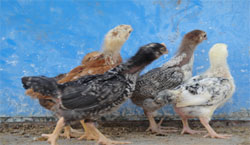
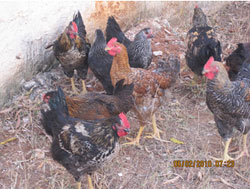
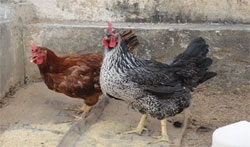
Native Chicken
Native poultry continues to exist in the rural areas all over the world. The efficiency of native poultry is very poor. The native poultry is still broody and lays not more than 15 eggs in a cycle and 60 eggs in one year. The growth rate of the birds is very slow. The bird achieves a weight of 1.0kg in four months and there is hardly any meat on the carcass. The meat is tough and needs hard cooking.
Low-Input Birds
Indian Council of Agriculture Research and Government of India have been working on birds which look like native chickens and suit the rural production systems. The birds are multi-coloured and are camouflaged from predators. The female parent is not broody and lays good number of eggs. The cost of the chick is low. They grow faster than the native chicken and attain 1kg weight in 40 to 45 days, depending on the feed given. If given good feed, they can grow faster. They also sustain low-quality feed and can survive under scavenging also. They can be reared under intensive poultry rearing system for four weeks until all vaccines are given. They can be shifted to semi-intensive or scavenging system later.
If reared under intensive system, they are cost-effective because the cost of the feed can be low and command better sale price. They can be reared with out chemical or antibiotic feed supplements and help in production of healthy organic chicken. The nutrient levels can be low. The meat consistency can be adjusted. These birds fetch better price in the live bird markets.
Indbro Research & Breeding Farms Pvt. Ltd, encouraged by the Ministry of Agriculture and the Technology Development Board, has bred the Rainbow Rooster in the private sector.
The comparision of low-input birds with native chicken and broiler chicken can be summarised as follows:
| Comparison | Native chicken | Low input birds | Broilers |
|---|---|---|---|
| Availability | Poor | Good | Good |
| Genetic status | Variable | Standard | Standard |
| Mass rearing | Not done | Possible | Only way |
| Organic production | Possible | Possible | Not possible |
| Taste | Good | Good | Average |
| Meat quality | Tough | Medium | Very tender |
| Risk of losses in production | Low | Low | High |
| Chick mortality | High | Low | Low |
| Egg laying | 60 | 140-160 | 100 |
| Initial growth | Poor | Good | V. Good |
| Chick cost | High | Low | High |
| Weight 4 weeks gms | <200 Gms | 400 | 1000 |
| Weight 7 weeks | 550 | 1450 | 2500 |
| Feed conversion efficiency | >3.0 | 2.0-2.2 | 1.65-1.85 |
| No of days to get 1200 gms weight | QZ | 44 | 32 |
| Market price (Rs/kg) | 80 | 75 | 50 |
Further Reading
| - | Go to our previous news item on this story by clicking here. |
January 2012







